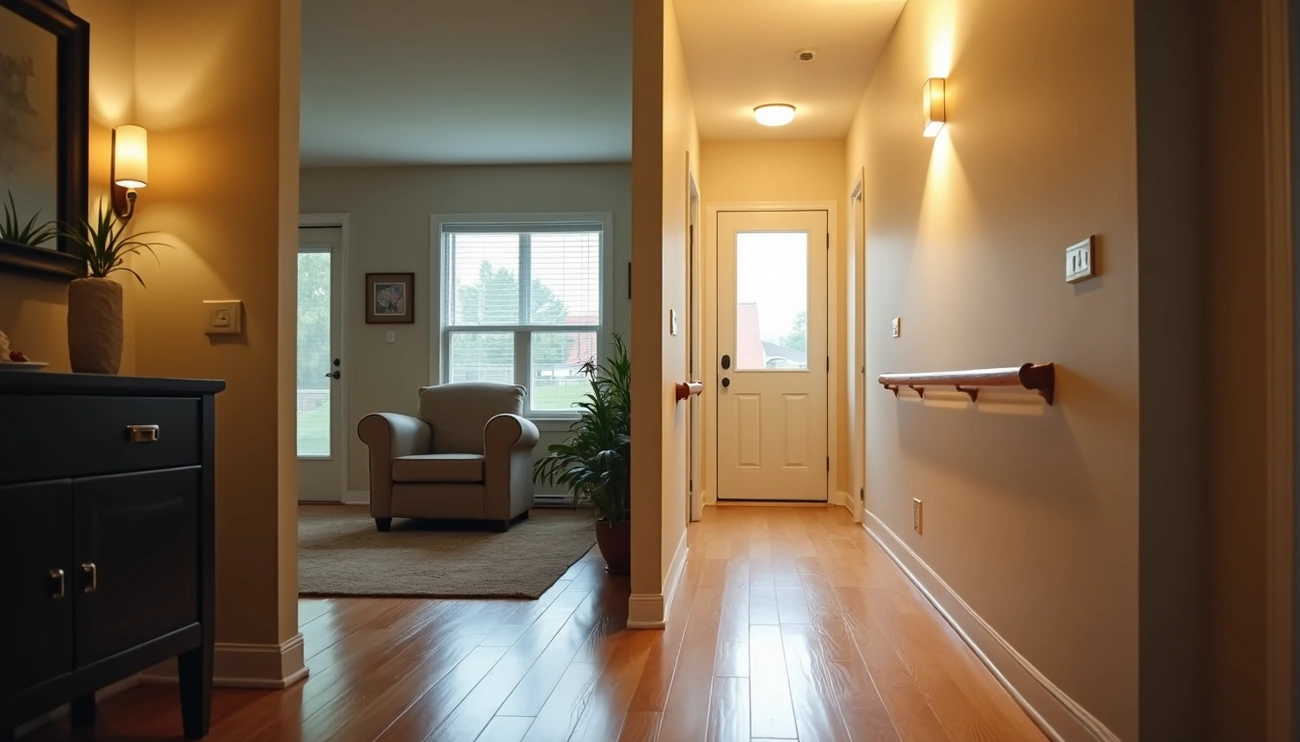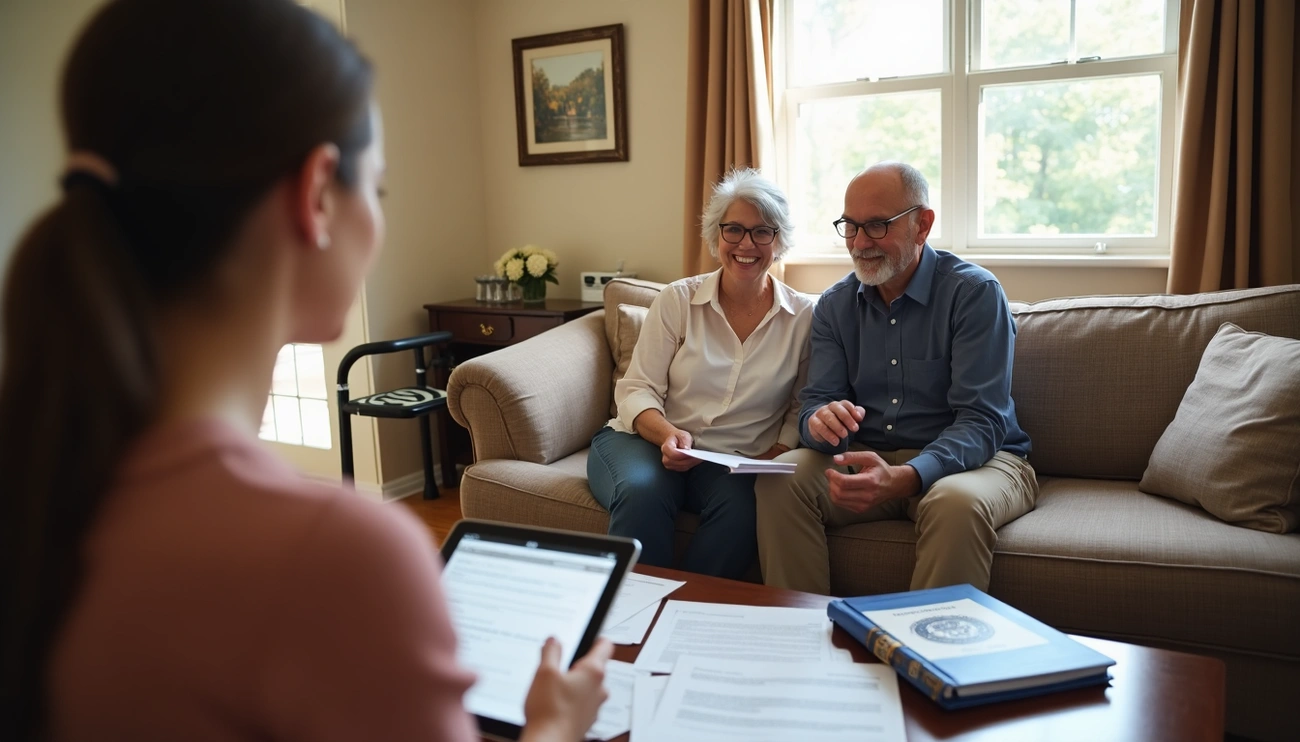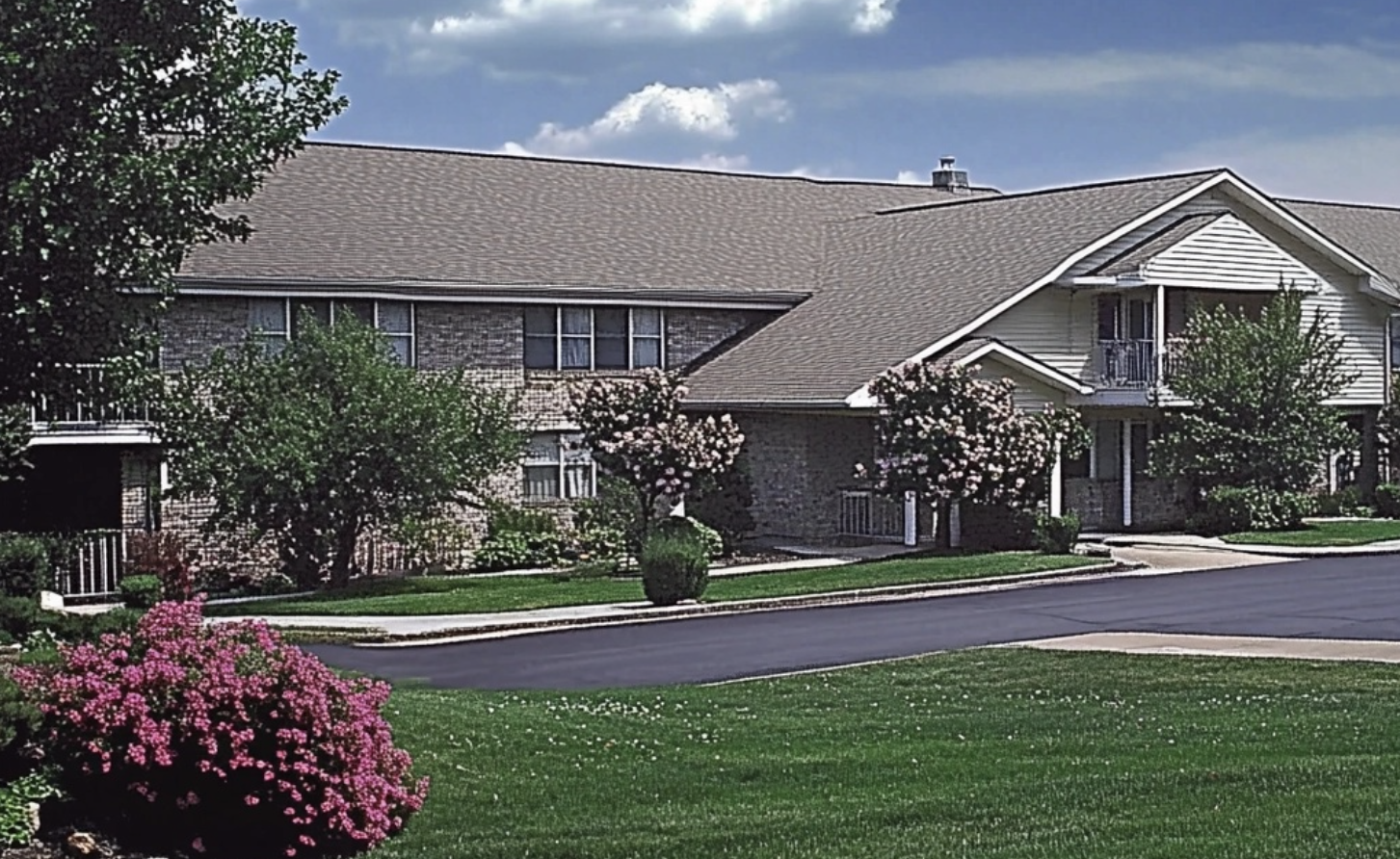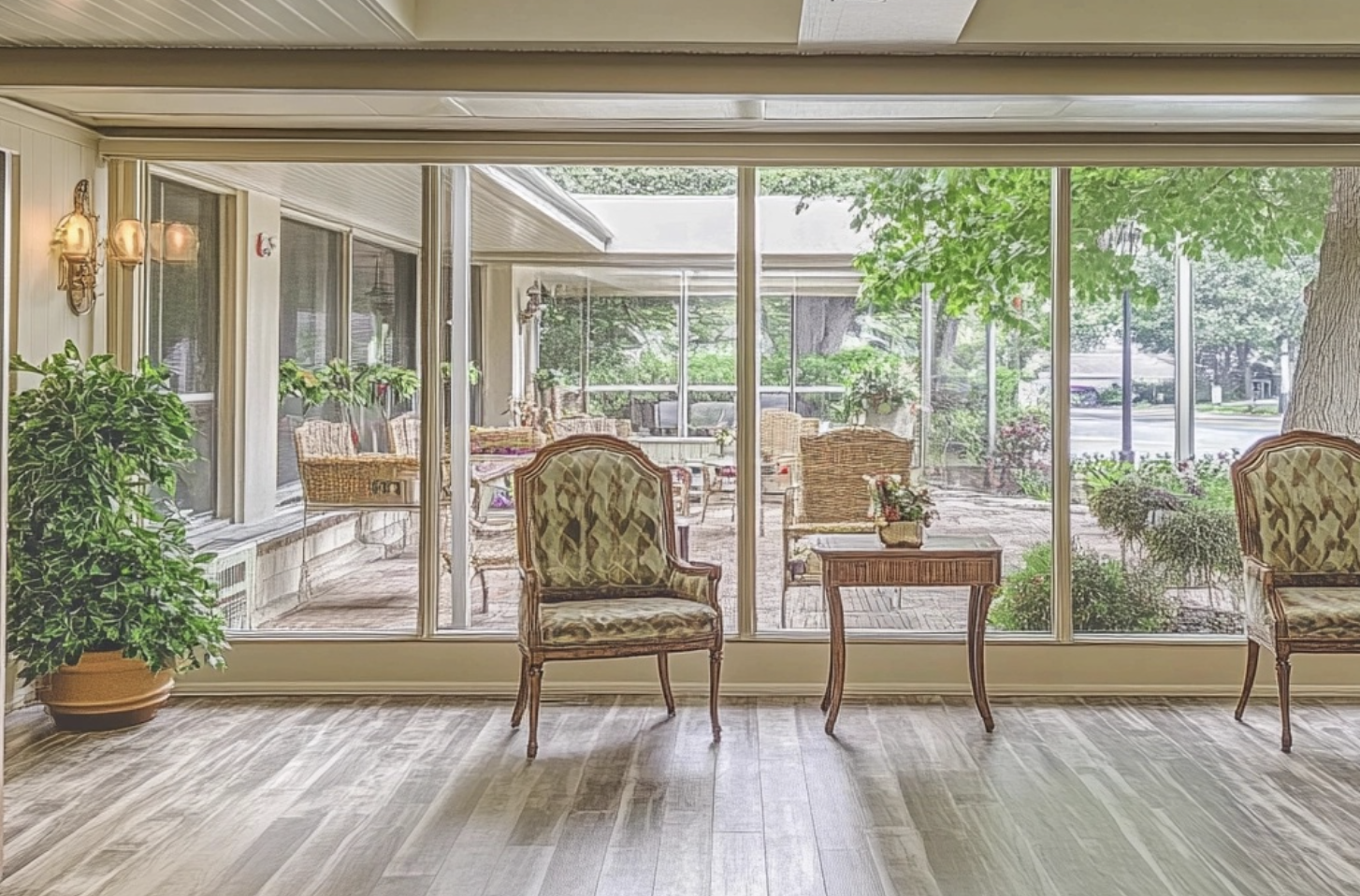The Essential Elderly Home Safety Guide
Did you know that elderly home safety is a critical concern for the 75% of U.S. adults over 50 who want to age in their current homes? Despite this overwhelming preference, the reality is troubling.
Unfortunately, nearly 3 million seniors aged 65+ are treated in hospitals annually for injuries sustained at home. Falls represent the leading cause of fatal injuries among older Americans, with bedrooms, bathrooms, and stairs being the most dangerous locations. Additionally, seniors face a higher risk of dying in house fires compared to younger adults.
The gap between desire and readiness is substantial. In fact, according to the U.S. Census Bureau, only 10% of American homes are actually prepared for aging residents. Most homes lack essential features like step-free entryways, first-floor bathrooms, or bedrooms. Furthermore, just 5% have ramps, and a mere 1% feature lifts to help with stairs.
We understand this challenge firsthand. That’s why we’ve created this comprehensive guide to elderly safety at home. From conducting a thorough home safety assessment to implementing room-by-room modifications, our home safety checklist for elderly residents covers everything families need. Whether you’re looking for simple elderly home safety tips or considering professional safety measures, this guide will help transform any house into a secure haven for aging loved ones.
Start with a Home Safety Assessment
Beginning a senior safety journey requires a thorough examination of your loved one’s living environment. A comprehensive home safety assessment serves as the foundation for identifying potential hazards before they cause accidents. Taking this proactive step can significantly reduce the risk of injuries that commonly affect older adults.
Walk through the home with safety in mind
Examining your loved one’s home with fresh eyes is crucial for spotting dangers that residents might overlook. This initial walkthrough should focus on common hazard areas like unsecured rugs, poorly lit stairwells, and cluttered pathways. Research shows that nearly 30% of adults over 65 report falling at least once in the last year—most occurring in their homes. Moreover, the prevalence of falls among people 65+ who live alone reaches an alarming 80%.
During your assessment, pay particular attention to:
- Trip hazards (cords, rugs, clutter)
- Lighting conditions in all areas
- Stability of furniture and fixtures
- Accessibility of frequently used items
Use a home safety checklist for elderly
Utilizing a structured checklist ensures no important safety element gets overlooked. The Centers for Disease Control and Prevention (CDC) offers a comprehensive home safety checklist that covers essential areas including stairs, floors, kitchens, and bathrooms. This methodical approach helps identify issues that might otherwise go unnoticed.
Subsequently, once hazards are identified, prioritize modifications based on urgency and impact. Importantly, even simple changes like removing throw rugs or installing nightlights can dramatically improve safety without significant expense.
When to consider a professional elderly home safety assessment
For thorough evaluation, consider hiring a trained professional. These assessments typically take 60–90 minutes and include a comprehensive 240-point inspection covering the entire home. Professional evaluators examine everything from exterior walkways to electrical safety.
The cost of professional assessments generally ranges from $199 to $399 depending on home size and location. Nevertheless, this investment can be worthwhile—100% of emergency room doctors agree that an annual home safety assessment is important for keeping seniors safe. Professional assessments are especially valuable after hospitalization, when new mobility challenges arise, or for seniors living alone.
A professional evaluator will provide detailed recommendations and can often refer pre-screened service providers for necessary modifications, creating a clear path toward a safer living environment.
Preventing Falls and Common Accidents
Falls represent the most significant safety threat to seniors, with over 28% of adults aged 65+ experiencing at least one fall annually. After the first incident, an individual becomes twice as likely to fall again. Therefore, implementing preventative measures is essential after completing your home safety assessment.
Remove tripping hazards like rugs and cords
Cluttered living spaces pose substantial risks for elderly residents. Unsecured rugs frequently bunch up or slide, making them primary tripping hazards. Likewise, extension cords crossing walkways create dangerous obstacles. I recommend:
- Eliminating rugs completely where possible, or securing them with non-slip strips
- Running cords along walls, away from walking paths
- Keeping high-traffic areas entirely free of clutter
- Removing items that obstruct pathways between rooms
Install grab bars and handrails
Strategically placed grab bars can significantly reduce fall risks in challenging areas. Proper installation is crucial – always secure them into wall studs or use appropriate anchors rated for at least 300 pounds. Primarily, place grab bars near toilets, in showers, and along staircases where balance challenges often occur.
Improve lighting in hallways and stairs
Poor lighting substantially increases fall risks, particularly in transition areas. Indeed, research indicates enhanced lighting can reduce fall rates by approximately 30% among older adults. Install bright, consistent lighting throughout hallways and stairwells, add motion sensors in bathrooms and kitchens, and place nightlights along paths to bathrooms.
Use non-slip mats and flooring
Floor surfaces significantly impact senior safety. Rubber flooring offers excellent slip resistance even when wet. Alternatively, cork provides softness and shock absorption while maintaining good traction. For existing surfaces, applying non-slip mats in bathrooms and other potentially wet areas creates essential protection.
Consider a medical alert system
Medical alert systems function as built-in emergency plans for seniors living independently. These devices connect users to emergency services with a simple button press. Furthermore, many systems now offer automatic fall detection as an additional feature, albeit typically at an extra monthly cost. These systems work through various combinations of GPS, Wi-Fi, and cellular networks to pinpoint exact locations during emergencies.
Room-by-Room Safety Upgrades
Creating a safer home for elderly loved ones requires targeted modifications in each living area. After completing a thorough assessment, it’s time to implement specific safety upgrades throughout key rooms where seniors spend most of their time.
Bathroom: Raised toilet seats and walk-in showers
The bathroom is statistically the most dangerous room, with 80% of falls in older adults occurring here. Raised toilet seats are essential for reducing joint strain. Standard toilet seats can be elevated 2-4 inches using seat extenders, while comfort-height toilets (17-18 inches from floor to seat) provide permanent solutions costing $350-600. For showers, consider low-threshold or curbless options that eliminate the dangerous high step-over barrier. Walk-in tubs with watertight doors cost between $2,000-5,000, whereas standard walk-in showers range from $600-3,000. Additionally, grab bars installed into wall studs are crucial near toilets and showers to provide stability.
Kitchen: Fire safety and easy-to-reach storage
Kitchens present unique hazards—primarily fire risk and accessibility challenges. Since cooking fires are the leading cause of home fires, install automatic stove shutoff systems that deactivate burners after periods of inactivity. Reorganize cabinets by placing frequently used items at waist level to minimize reaching or bending. Replace round cabinet knobs with D-shaped drawer pulls for those with limited dexterity. Furthermore, consider adding pull-out shelves, lazy Susans, or pegasus units (pull-down mechanisms) for accessing high cabinet contents.
Bedroom: Clear pathways and nightlights
In bedrooms, prioritize open pathways between the bed, bathroom, and doorway. Ensure proper bed height (20-23 inches from mattress top to floor) for easier transfers. Install nightlights with motion sensors along pathways to the bathroom to prevent disorienting darkness. Consider bed rails for stability when getting in and out of bed, plus fall mats beside the bed to reduce injury risk if falls occur. Meanwhile, keep essential items like phones, medications, and water within arm’s reach on a bedside table with rounded edges.
Living Room: Stable furniture and no clutter
For living rooms, arrange furniture to create wide, unobstructed pathways. Choose sturdy seating with high, supportive armrests to assist with sitting and standing. Avoid low, soft furniture that makes rising difficult, and consider chairs 2-3 inches higher than standard height. Remove throw rugs entirely, as nearly 50% of falls among older adults involve rugs. Finally, secure top-heavy furniture to walls to prevent tipping if used for balance.
When to Invest in Professional Modifications
As DIY modifications reach their limits, certain elderly home safety challenges require professional intervention. These larger-scale projects create truly accessible spaces for aging loved ones with more serious mobility concerns.
Widening doorways and installing ramps
Standard doorways often measure only 28-32 inches wide, yet ADA guidelines recommend at least 36 inches to comfortably accommodate wheelchairs and walkers. Although expanding doorways requires structural knowledge, this modification enables greater independence throughout the home. For exterior access, properly designed ramps must follow specific safety ratios—typically 1:12 slope (one inch of rise for every 12 inches of length) for maximum safety.
Stairlifts and zero-threshold entries
For multi-level homes, stairlifts provide essential access between floors. Battery-powered stair chair lifts cost between $2,500-$9,000 for straight staircases, whereas custom curved models start around $11,000. Another valuable modification is zero-threshold entries, eliminating steps entirely at entrance points. These modifications typically add $800-$1,500 to construction budgets but create seamless transitions that prevent falls.
Hiring a Certified Aging-in-Place Specialist (CAPS)
CAPS professionals receive extensive training through the National Association of Home Builders in partnership with AARP. Following personalized assessments (approximately $500 for a comprehensive evaluation), these specialists develop customized adaptation plans addressing specific mobility needs. Their expertise ensures modifications meet both safety requirements and practical needs while maintaining esthetic appeal.
Exploring financial aid and Medicare Advantage options
Funding assistance for home modifications includes:
- Low-interest loans through HUD Title 1 property improvement programs
- USDA Rural Development grants and loans for qualifying seniors
- Area Agency on Aging modification and repair funds
- VA assistance programs like HISA grants (for veterans)
- Medicaid waiver programs in many states
Although Original Medicare typically doesn’t cover home modifications, some Medicare Advantage plans now include supplemental benefits for medically necessary improvements like grab bars, wheelchair ramps, or widened doorways. Additionally, Rebuilding Together and local energy assistance programs offer support for qualifying low-income seniors.
Conclusion
Creating a senior-safe home requires thoughtful planning and strategic modifications. Throughout this guide, we’ve explored essential safety measures that can significantly reduce the risk of accidents for elderly loved ones. Undoubtedly, the process begins with a thorough home safety assessment—either DIY or professional—to identify potential hazards before they cause harm.
Fall prevention stands as the cornerstone of elderly home safety. Therefore, removing tripping hazards, installing grab bars, improving lighting, and using non-slip surfaces should top your priority list. Additionally, our room-by-room approach provides targeted solutions for bathrooms, kitchens, bedrooms, and living areas where specific dangers exist.
Some situations call for professional interventions. Widening doorways, installing ramps, and adding stairlifts might seem costly initially, but these modifications offer long-term independence and safety benefits that far outweigh their expense. Certified Aging-in-Place Specialists can provide expert guidance tailored to your loved one’s specific needs.
Financial concerns need not prevent necessary safety upgrades. Various assistance programs—from Medicare Advantage benefits to government grants—can help offset modification costs. The investment in home safety ultimately protects what matters most: your loved one’s well-being and independence.
Most importantly, creating a senior-safe environment represents an act of care that allows aging parents or relatives to maintain dignity while remaining in familiar surroundings. Small changes often yield remarkable improvements in quality of life. Your proactive approach today will provide peace of mind for years to come.
FAQs
Q1. What are the most important safety modifications for seniors living at home? The most crucial safety modifications include removing tripping hazards like rugs and cords, installing grab bars in bathrooms and along staircases, improving lighting in hallways and stairs, using non-slip mats in wet areas, and considering a medical alert system for emergencies.
Q2. How can I make the bathroom safer for an elderly person? To enhance bathroom safety, install raised toilet seats to reduce joint strain, opt for walk-in showers or tubs with low thresholds, place grab bars near toilets and in showers, and use non-slip mats on potentially wet surfaces.
Q3. Are professional home safety assessments worth the cost? Yes, professional assessments can be valuable, especially after hospitalization or when new mobility challenges arise. They typically cost between $199 to $399 and provide a comprehensive 240-point inspection, offering detailed recommendations for necessary modifications.
Q4. What financial assistance is available for home safety modifications? Financial aid options include low-interest loans through HUD, USDA Rural Development grants, Area Agency on Aging funds, VA assistance programs for veterans, and Medicaid waiver programs in many states. Some Medicare Advantage plans may also cover medically necessary improvements.
Q5. How can I improve kitchen safety for seniors? To enhance kitchen safety, install automatic stove shutoff systems, reorganize cabinets to place frequently used items at waist level, replace round knobs with D-shaped drawer pulls, and consider adding pull-out shelves or lazy Susans for easier access to high cabinets.




